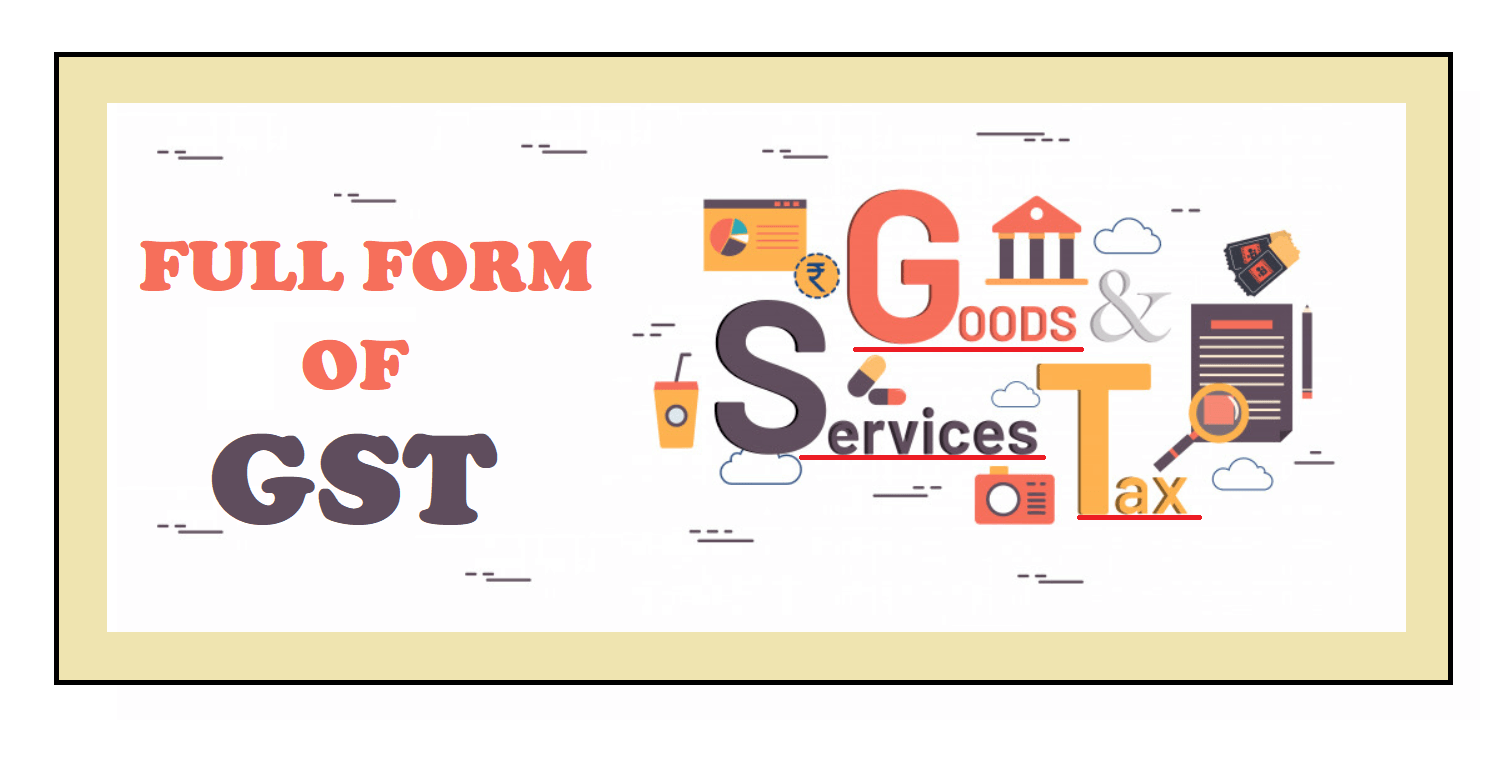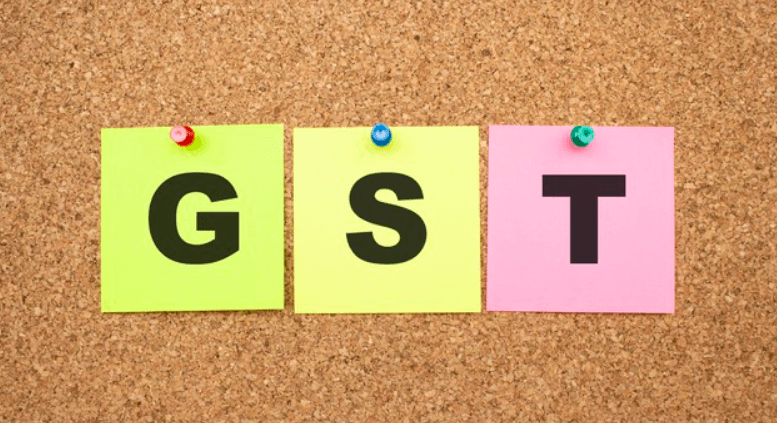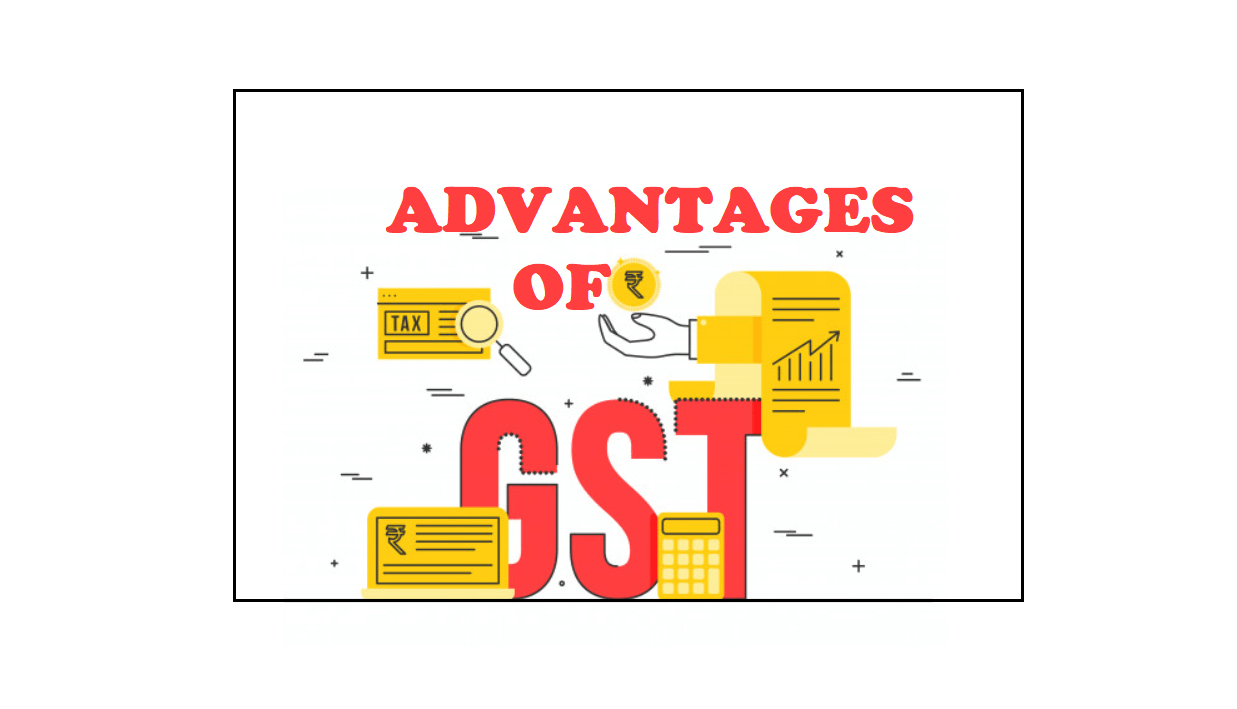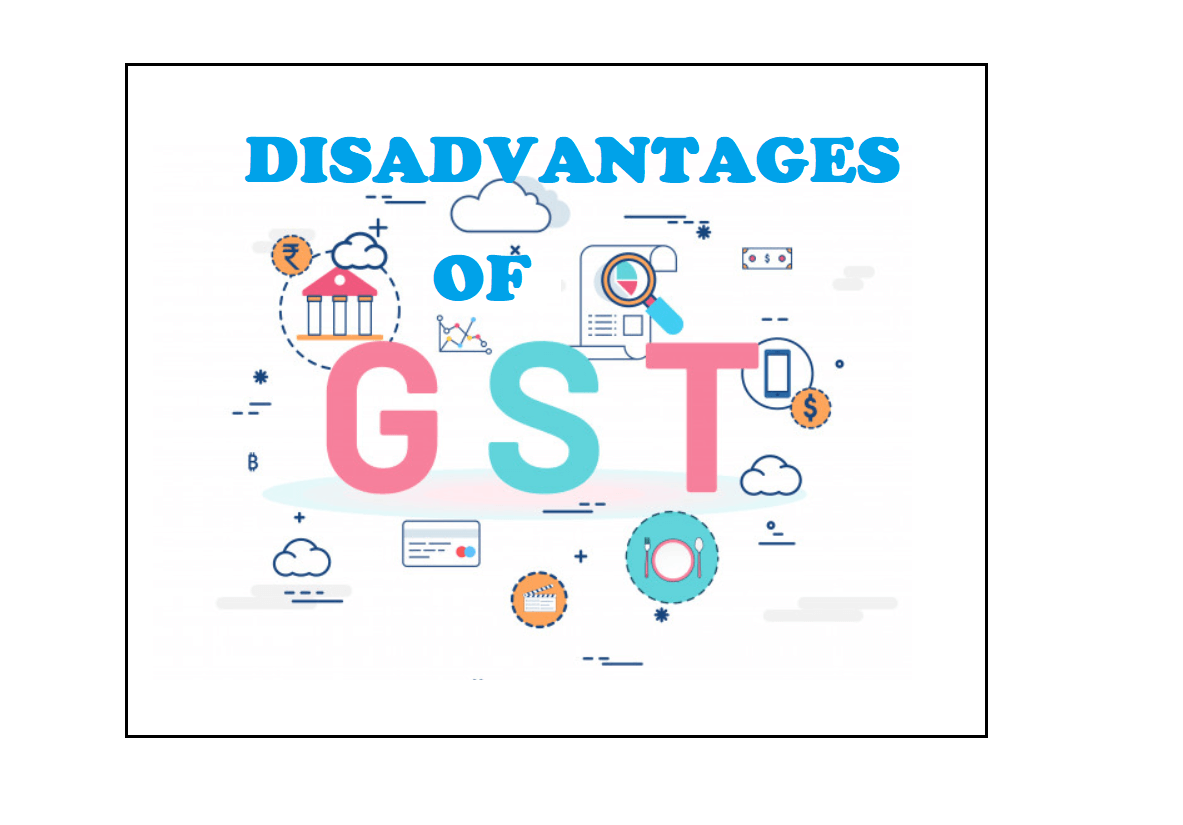Full Form of GST
Full Form of GST
GST is one of the most revolutionary tax reforms that is being introduced in our country since independence. It eradicated all the problems and the constant changes that were made to taxes with each financial year. But learning more about GST, first learn what does GST stands for.
The full form of the financial abbreviation GST is Goods and Services Tax.

This tutorial will briefly cover about the definitions, history, types of GST, its advantages, disadvantages, commodities not subject to GST and other detailed information related to ICU or Goods and Services Tax.
What is GST?

“Goods and Services Tax or GST is a single indirect tax launched by the Government of India on the supply of goods and services unlike such as food, clothes, items of daily needs, transportation etc.”
GST is an indirect tax that consumers have to pay while purchasing any goods, commodities, or services, such as meals, garments, electronics devices, everyday requirements, transport, shipping, travel, etc. The notion of GST is that it is an "Indirect Tax", i.e., where the consumers don't pay the tax directly to the government but on their behalf, the manufacturer, retailer or providers of services pay it. The sellers normally add the tax amount into their charges, and the amount the consumers pay include GST. Thus, the customer ends up paying a tax even if they don't fall in the income taxpayer category.
The Government collects taxes for its functioning and for maintaining the country's revenue source. But earlier, the tax was imposed directly on the income of individuals. Thus, it leads to a cascade effect where tax was paid at every stage in the chain flow. Let’s understand the concept of the cascading effect through an example:
Example: A wholesaler sells a good at the cost of price Rs. 112 to a retailer wherein Rs 100 is the product's actual price and Rs 12 is the 12% tax amount. Further, the retailer sells the same good to the consumers at Rs 126, where Rs 112 would be the base price and Rs 14 is the 12% GST amount. Hence, because of the cascading effect of taxes, the customer has to buy an expensive product.
To resolve these problems and eliminate the cascading effect, GST was introduced. It is designed to induce all the indirect taxes under one umbrella where the tax will be paid only at the final point of consumption.
Who introduced GST in India?
On the midnight of July 1, 2017, India's Prime Minister Narendra Modi marked the most historical movement by launching GST. It took the BJP government almost two decades to implement the concept of GST in the nation since the concept was first proposed under the presidency of former prime minister Atal Bihari Vajpayee. The progression of GST accompanied many meetings, discussions, amendments and reviews before it was finally launched in 2017. The nationwide GST implementation also got delayed because it needed a Constitutional Amendment, two-thirds majority support in the Indian Parliament, and an acceptance of at least half of the total Indian states.
Types of GST
- CGST or Central Goods and Services Tax
CGST is the tax imposed on intrastate supplies goods, services and product distribution where the tax rate is less or equal to 14%. CGST covers Excise duty taxes on Hospitals & Toiletries Preparation Act, Central Excise tax, Services Tax, Additional Excise Duty tax, Countervailing Duty tax etc.
- SGST or State Goods and Services Tax
SGST tax is imposed on goods and services rendered within an Indian state’s borders and are governed by the SGST act. The act includes several state taxes, such as luxury tax, state income tax, border entry tax, entertainment tax, etc.
- IGST or Integrated Goods and Services Tax
IGST is the tax levies for the international transportation of goods and services. For example, the commodities are exchanged among two states (like the goods are traded between Tamil Nadu & West Bengal, the IGST will be applicable). IGST is levied on all kinds of imports & exports goods & services from India.
Commodities not subjected to GST
The List of several items that does not come under GST is as follows:
- First, Meat or Fillets
- Alive birds & animals
- Trees & alive plants
- Alcohol, Beer & Drinks
- Manures & Fertilizers
- Beverages including Coffee & Teas
- Pulses, Spices
- Dry fruits
- Fruits & Vegetables
- Eatable grains
- Musical & Industrial tools
- Pharmaceutical Drugs & Medicines
- Claws & hooves.
Advantages of GST

Every coin has two aspects, head (positive) or tails (negative). Same is applicable for the biggest tax reform in India, GST. The various advantages and relaxations of GST taxation regime are as follows:
- GST has put away the cascading tax effect and has brought all the direct or indirect taxes under one umbrella.
- GST regime has increased the threshold registration to Rs 20 lakh. Thus, benefiting many small business people and service providers
- GST also includes various composition plans for small enterprises.
- It supports a user-friendly and easy online system.
- The number of agreements is less than the previous taxation system (unlike vat and service tax). Thus, it is less complicated as it has eliminated unnecessary returns and compliances.
- GST has planned out all the terms relevant to the e-commerce sector, and these provisions are applicable all over India.
- GST has improved the efficiency and productivity of logistics by reducing logistics costs.
- GST covers all the industries, including the unorganized sectors like construction and textile, which were largely unregulated in the previous taxation system.
Disadvantages of GST

The various disadvantages of GST tax regime are given below:
- Increased costs due to software purchase
- GST tax regime has mandated all Small and medium-sized enterprises (SME) to be GST-compliant.
- GST also involves an increase in various operational expenses
- GST is an online taxation system
- GST is a burden for SME's